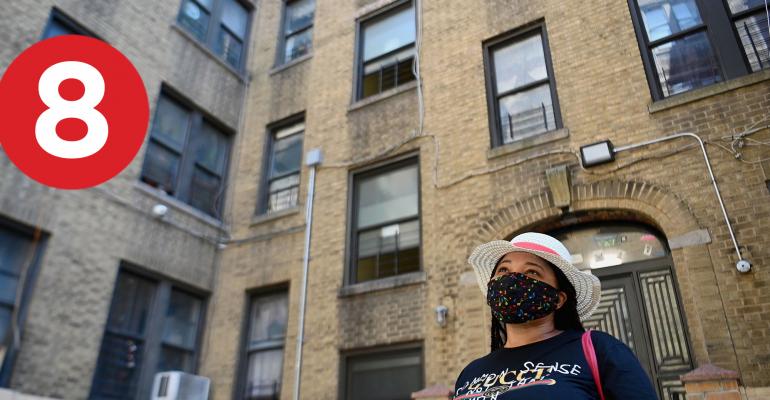- Rental Assistance to be Redirected Based on Demand “The Treasury Department is redirecting rental-assistance money from some states and localities that haven’t used the bulk of their funds to others facing backlogs of aid requests, according to administration officials. The officials said they couldn’t specify which jurisdictions would lose and gain funds. But they said those with large amounts of unused funds include rural states—like Montana and North Dakota—while local officials in several more populous states—like New York and Texas—are expected to exhaust their rental-assistance money over the coming week and months.” (The Wall Street Journal)
- Farm Real Estate Values Jump Sharply Higher “The Federal Reserve Survey of Agricultural Credit Conditions shows that farmland values rose in the third quarter of this year. The value of non-irrigated cropland rose by at least 12 percent in all of the participating Districts in the survey. The rapid increase was consistent in most states, with annual increases of more than 20 percent in some areas. Supporting farm real estate markets, interest rates on farm loans remained at historic lows, and strong farm finances also led to further improvement in agricultural credit conditions.” (NewsDakota.com)
- How Warehouses Are Taking Over the U.S. “For every Cyber Monday purchase, there is a warehouse employee packing up those soon-to-be presents. The big online shopping holiday comes amid a warehouse shortage across the United States as distribution center vacancy rates are at all-time lows. Nearly 96% of existing industrial space is in use, according to commercial real estate services company JLL. The U.S. may need an additional 1 billion square feet of new industrial space by 2025 to keep up with demand, JLL estimates.” (CNBC)
- Savills and SRS Real Estate Partners Form Strategic Alliance “Savills today announced that it formed a strategic alliance with SRS Real Estate Partners (SRS), supplementing its existing North American retail capabilities and enhancing its ability to provide seamless, high-caliber advisory services to retail occupiers, investors and owners worldwide. ‘The United States is one of the biggest retail markets globally with estimated retail sales expected to total nearly $4.5 trillion in 2021, making the US a key target for expanding international brands,’ Mitchell E. Rudin, Savills North America chairman and CEO, commented.” (PR Newswire)
- Where the Housing Market Is Going in 2022 as Told by 7 Leading Forecasting Models “A perfect storm. That's the best way to describe the red-hot housing market we've seen from coast-to-coast during the pandemic. It was spurred by a combination of recession-induced low mortgage rates, remote work allowing buyers to sprawl further away from their workplace, and a demographic wave of first-time millennial homebuyers entering into the market. Of course, years of under-building means there simply aren't enough homes available to meet this demand. Cue record price growth.” (Fortune)
- Invesco’s R. Scott Dennis on Post-COVID Growth and Managing its Current Assets “Savvy investment decisions have separated the haves from the have-nots in the commercial real estate industry over the past two years, and Invesco Real Estate is one company that’s firmly in the ‘haves’ camp. The COVID-19 market crisis only further validated the investment themes Invesco had pursued for some time within its portfolio, allowing it to uncover early-pandemic market opportunities while most were battening down the hatches, and emerge fully ready for action in the post-COVID world.” (Commercial Observer)
- Can New York Really Get to 100% Clean Energy by 2040? “New York effectively has two separate electrical grids: upstate, where most of the state’s growing clean-power supply is generated, and in and around New York City, the area that consumes the most energy and relies most heavily on power from fossil fuels. The power lines that connect the two, already clogged with a traffic jam of electrons, cannot carry more. Gov. Kathy Hochul has announced two massive transmission-line projects to help bridge that divide, a step that environmental advocates hope is a sign that she is accelerating the state’s efforts to address climate change and environmental inequities.” (The New York Times)
- The Remote Work Revolution Hasn’t Happened Yet “You might call the last year or so a remote work revolution, but that’s not quite right. For one thing, remote work wasn’t an option for most of the country. But even for the fortunate people who were able to work from home, what they were doing wasn’t really working. It’s more like a panicked compromise forged under the chaos of a national emergency. But as we inch our way toward the other side of this pandemic — or at least the closest we’ll get to the other side of it — we have an opportunity to rethink our broken relationship to work. The pandemic was an inflection point, and what happens or doesn’t happen next is up to us.” (Vox)
0 comments
Hide comments





